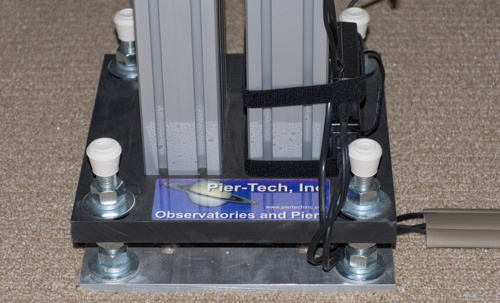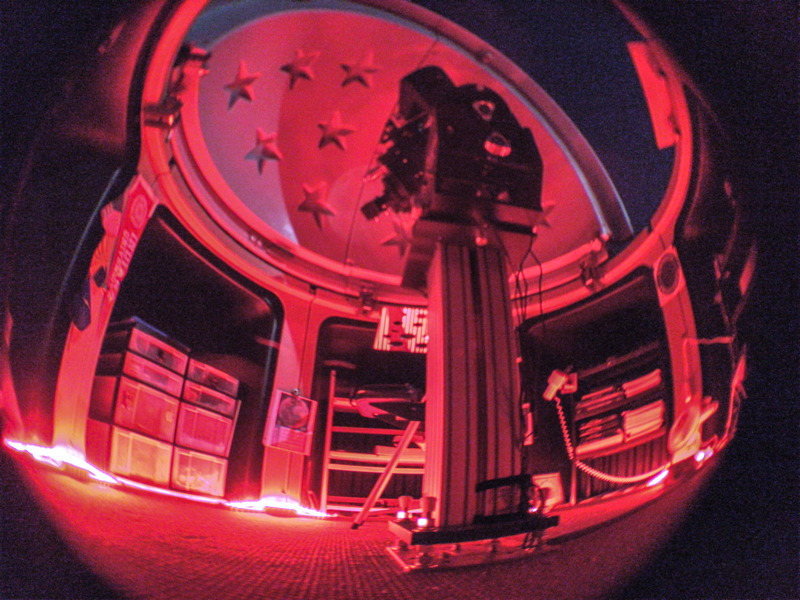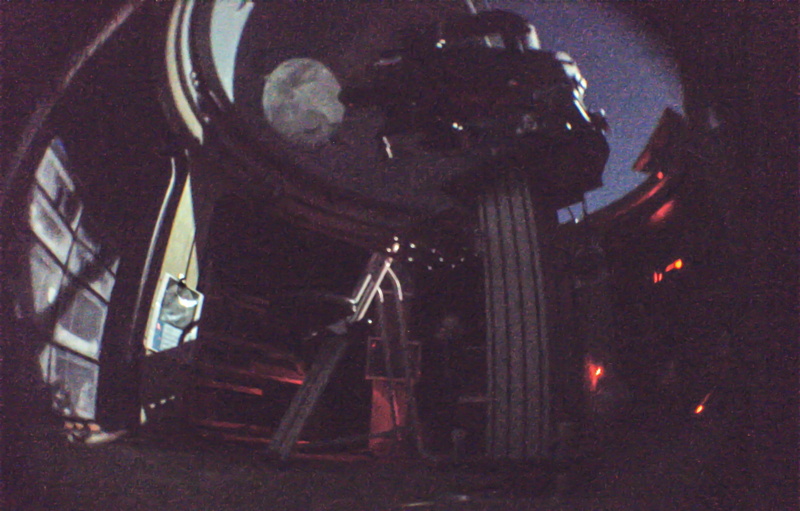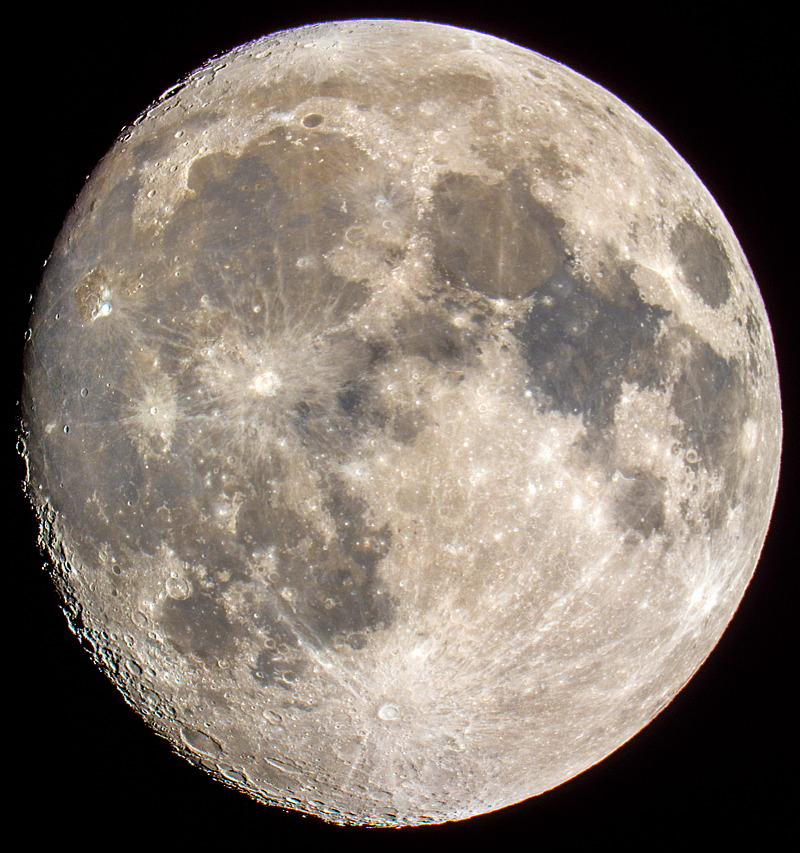iPhone: Moon on Observatory Dome;
DSLR: Colorful Moon
Posted: 14 October 2016
On Wednesday, 12 October 2016, a narrow band of clouds came through from the west coast. Did not open the observatory that night. Thursday, 13 October, was clear.
|
Open: Thursday, 13 October 2016, 1816 MST Temperature: 88°F |
Session: 1022 Conditions: Clear |
Equipment Used:
12" f/8 LX600 w/StarLock
Wireless AutoStar II handset
2" 24mm UWA eyepiece
1.25" Binoviewers 20mm
Camera:
iPhone 6s Plus
D7200 DSLR
After opening the observatory I added some rubber caps on the pier floor bolts:

1826 MST: LX600 ON, StarLock OFF, High Precision OFF.
1830 MST: viewed the planet Venus, 102X. Gibbous phase visible. Next, viewed the planet Saturn, 102X. The moons Titan, Rhea, and Dione were visible. A minute later the moon Tethys became visible. Then viewed the planet Mars, 102X. Although the disk was small, a prominent dark surface feature was visible near the center of the planet's gibbous disk. 1844 MST: viewed the planet Neptune, 102X. A small pale blue disk was visible. Then viewed the planet Uranus, just rising over the hill to the east, 102X. Its disk was larger but was a paler blue.
1848 MST: viewed the waxing gibbous Moon, 102X. It was pretty and bright.
Then began setting up to photograph the Moon projected onto the observatory dome using the iPhone 6s Plus. I mounted the iPhone with a clip-on fisheye lens on a GorillaPod and placed the camera on the observatory floor by the door. Used NightCap Pro (Long Exposure, Light Boost, ISO 4000, 1/3sec, 8 seconds exposure) and the Apple Watch (remote shutter release and remote viewing aid) for this photo:

I moved the iPhone to a better location on the floor to capture the Moon on the observatory dome. This photo is with NightCap Pro (Long Exposure, Light Boost, ISO 8000, 1/3sec, 19 seconds exposure)

1925 MST: next I set up for lunar imaging with the 12" telescope. Mounted the D7200 DSLR at prime focus + focal reducer. This is a 1/640sec, ISO 200, exposure with the color saturation enhanced:

1931 MST: ended imaging. Did some lunar observing using the William Optics Binoviewers, 122X. The view was wonderful. Using binoviewers is a great way to observe the Moon.
1942 MST: last look at the Moon, 102X.
|
Close: Thursday, 13 October 2016, 1953 MST Temperature: 71°F |
Session Length: 1h 37m Conditions: Clear |
Comments are welcome using Email. Twitter users can use the button below to tweet this report to your followers. Thanks.
Cassiopeia Observatory Home Page
Copyright ©2016 Michael L. Weasner / mweasner@me.com
URL = http://www.weasner.com/co/Reports/2016/10/14/index.html
